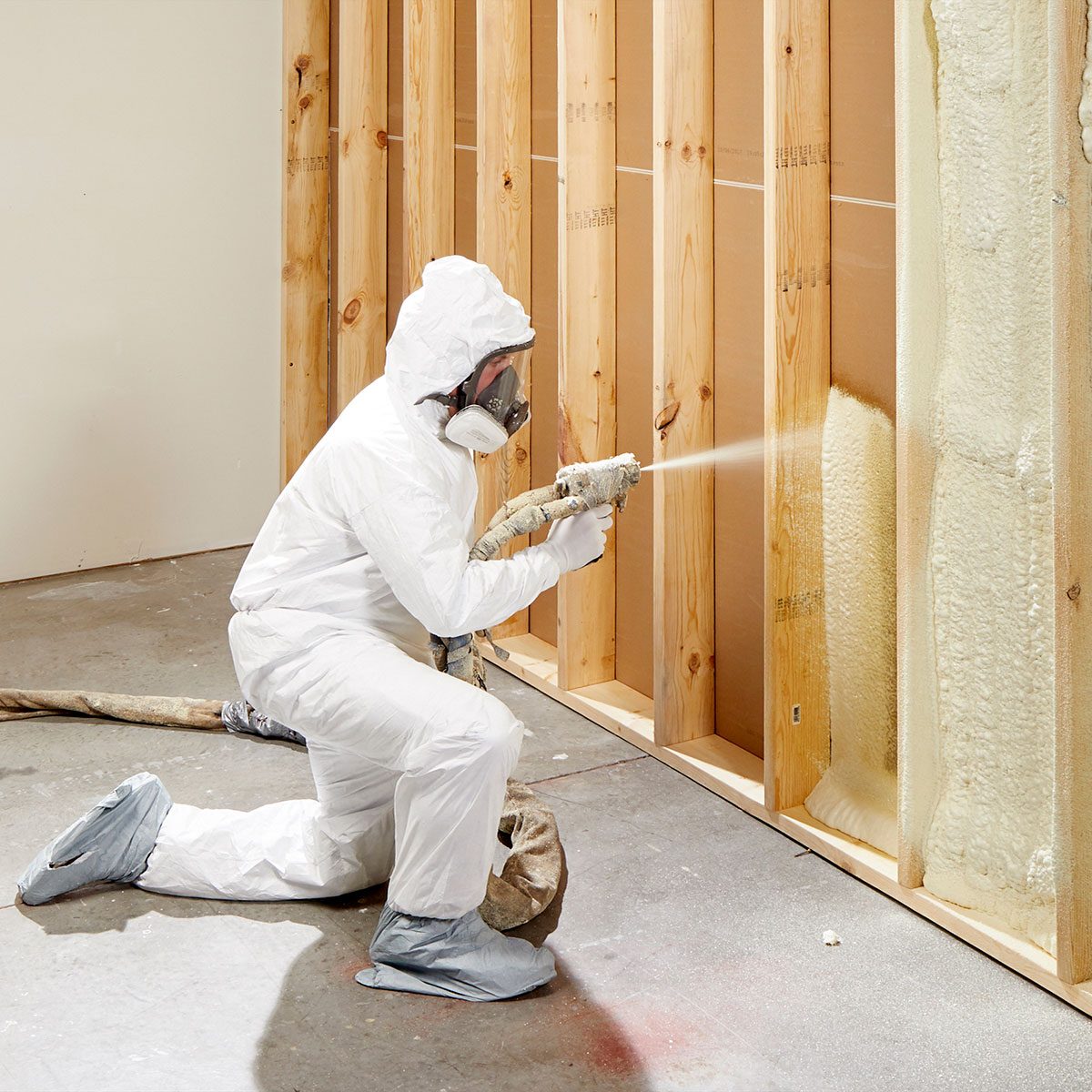Understanding the Benefits of Using Spray Foam for Insulation Projects
Understanding the Benefits of Using Spray Foam for Insulation Projects
Blog Article
Spray Foam: The Ultimate Option for Air Sealing and Insulation
Spray foam insulation has become a leading remedy for reliable air securing and thermal insulation, offering an one-of-a-kind mix of homes that set it apart from standard approaches. Its capacity to expand and fill voids makes it particularly efficient in stopping air leakage, which can dramatically affect energy performance. Nonetheless, comprehending the full scope of its benefits, setup processes, and comparisons with various other insulation types is critical for making informed decisions. As we explore these aspects, the ramifications for both brand-new constructions and retrofits come to be significantly substantial. What factors should affect your selection?
What Is Spray Foam?
Spray foam is a functional insulation product that incorporates the principles of air securing and thermal resistance to enhance energy efficiency in buildings. Composed primarily of polyurethane or various other similar compounds, spray foam is applied as a liquid that increases upon call with surface areas, developing a strong, constant layer of insulation. This unique home permits it to fill voids, cracks, and spaces that standard insulation products might forget, supplying a superior air seal.
There are 2 primary sorts of spray foam: open-cell and closed-cell. Open-cell spray foam is lighter and much more flexible, supplying superb noise absorption and a reduced R-value per inch - Spray Foam. In comparison, closed-cell spray foam is denser, offering a greater R-value, wetness resistance, and added structural integrity to developing parts
The application process normally includes customized tools, making sure a smooth application that sticks to various substrates, consisting of steel, concrete, and wood. This flexibility makes spray foam ideal for both brand-new buildings and retrofitting existing frameworks. Its ability to create an airtight obstacle significantly adds to lowering energy intake and enhancing interior air quality, thus making it a recommended choice amongst builders and property owners alike.
Advantages of Spray Foam Insulation
Among the most considerable advantages of spray foam insulation is its extraordinary capability to produce a constant air barrier, which successfully minimizes energy loss. Unlike typical insulation products, spray foam expands to fill fractures and voids, guaranteeing that air leak is dramatically reduced. This characteristic not just enhances energy effectiveness but likewise brings about decrease energy expenses gradually.
In addition, spray foam insulation provides premium thermal resistance, adding to an extra steady indoor environment. Its high R-value per inch permits reliable insulation in restricted spaces, making it perfect for attics, walls, and crawl areas. Moreover, the moisture-resistant buildings of spray foam aid stop mold and mildew and mildew growth, promoting much healthier living problems.
An additional critical advantage of spray foam insulation is its sound-dampening top qualities (Spray Foam). It efficiently reduces noise transmission between spaces, producing a quieter and more comfortable home atmosphere. The sturdiness of spray foam likewise stands apart, as it does not droop or settle with time, keeping its efficiency throughout its lifespan
Just How Spray Foam Works
Understanding just how spray foam insulation functions is necessary for appreciating its performance in air sealing and thermal resistance. Spray foam insulation contains 2 primary parts: isocyanate and polyol material. When these elements are blended, they undergo a chain reaction that triggers the product to expand swiftly, developing a dense foam that fills up cavities, fractures, and spaces.
As the foam expands, it sticks to surfaces, developing advice an impermeable seal that significantly reduces air seepage. This characteristic makes spray foam insulation very effective at avoiding drafts and dampness penetration, which can cause energy loss and damage over time. Additionally, the closed-cell variation of spray foam supplies superior thermal resistance as a result of its inflexible structure, efficiently lessening warm transfer.
The unique residential or commercial properties of spray foam allow it to adhere to uneven surface areas, here are the findings guaranteeing detailed insurance coverage and a seamless barrier. As an outcome, spray foam insulation not just enhances power efficiency yet additionally contributes to enhanced interior air quality by decreasing the buildup of allergens and contaminants. Eventually, understanding the technicians behind spray foam underscores its role as an exceptional option for insulation and air securing in both household and business applications.
Installation Process Overview

Prior to installment, the area should be properly cleaned and prepped, guaranteeing that surfaces are devoid of debris, dust, and moisture. This action is vital since pollutants can jeopardize attachment and overall efficiency. Once the location is prepared, the application includes mixing the 2 components of the spray foam, which expands upon call and fills up gaps efficiently.
Trained professionals need to conduct the setup, using specialized equipment to guarantee uniform coverage and optimal thickness. Safety preventative measures, consisting of putting on protective gear and making certain appropriate air flow, are vital throughout this procedure. After application, the foam typically cures rapidly, forming a solid obstacle that enhances energy performance.
Contrasting Spray Foam to Typical Insulation
When evaluating insulation options, spray foam insulation stands out in contrast to conventional materials such as fiberglass and cellulose. Unlike fiberglass and cellulose, which can enable air infiltration, spray foam increases upon application, filling up spaces and gaps to develop an impermeable seal.
In addition, spray foam supplies a greater R-value per inch than conventional insulation types, offering even more reliable thermal resistance in a thinner account. This browse around this site particular is especially helpful in rooms with minimal cavity deepness. Additionally, spray foam is resistant to moisture and mold growth, which can be a substantial concern with cellulose and fiberglass, particularly in moist environments.
Nevertheless, spray foam insulation typically carries a higher upfront cost than its traditional counterparts. Home owners should evaluate this initial investment versus lasting power financial savings and performance advantages. Ultimately, while both insulation types offer their purpose, spray foam arises as a much more innovative service for contemporary insulation needs, especially in terms of air securing and thermal performance.

Verdict
In summary, spray foam insulation represents a highly reliable remedy for attaining optimum air sealing and thermal resistance. Its distinct properties, consisting of moisture resistance and sound dampening, make it appropriate for different applications in both brand-new building and constructions and retrofitting projects (Spray Foam). Although the initial prices may be greater compared to traditional insulation products, the lasting advantages, such as considerable energy cost savings and boosted indoor air high quality, warrant the financial investment and underscore its value in contemporary building practices.
Spray foam insulation has emerged as a leading service for effective air sealing and thermal insulation, supplying an one-of-a-kind combination of homes that establish it apart from typical methods.Spray foam is a functional insulation material that combines the principles of air securing and thermal resistance to improve energy performance in buildings.When assessing insulation choices, spray foam insulation stands out in comparison to standard products such as fiberglass and cellulose. Inevitably, while both insulation kinds offer their objective, spray foam emerges as a more advanced option for contemporary insulation needs, especially in terms of air securing and thermal efficiency.
In recap, spray foam insulation stands for a very efficient option for achieving optimal air securing and thermal resistance.
Report this page